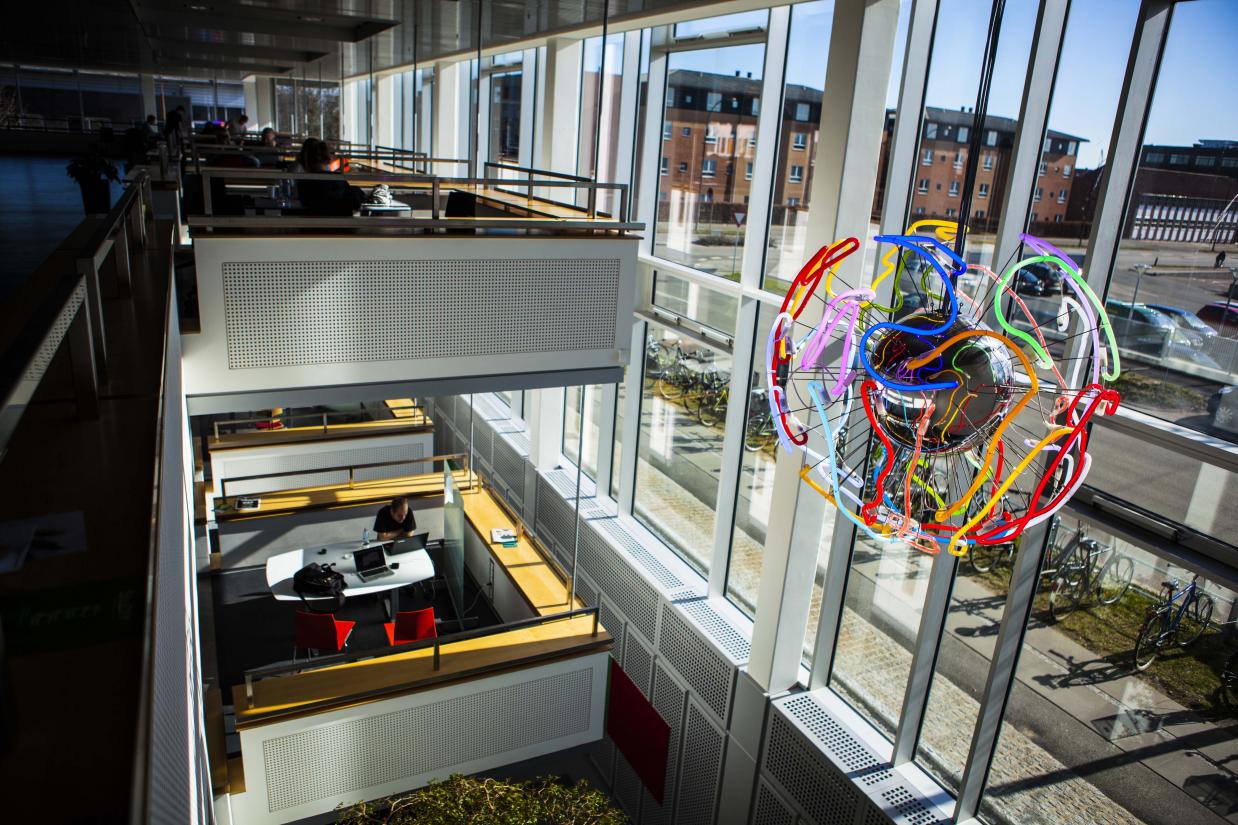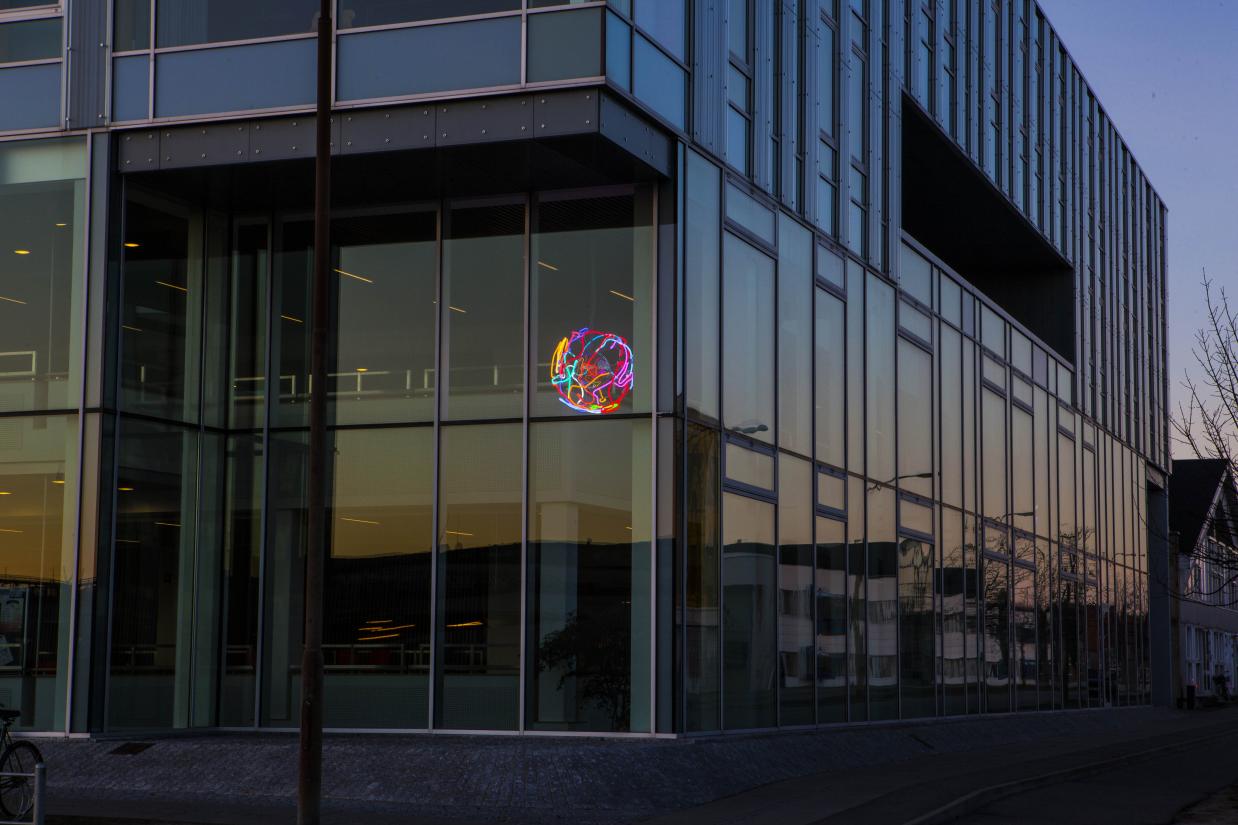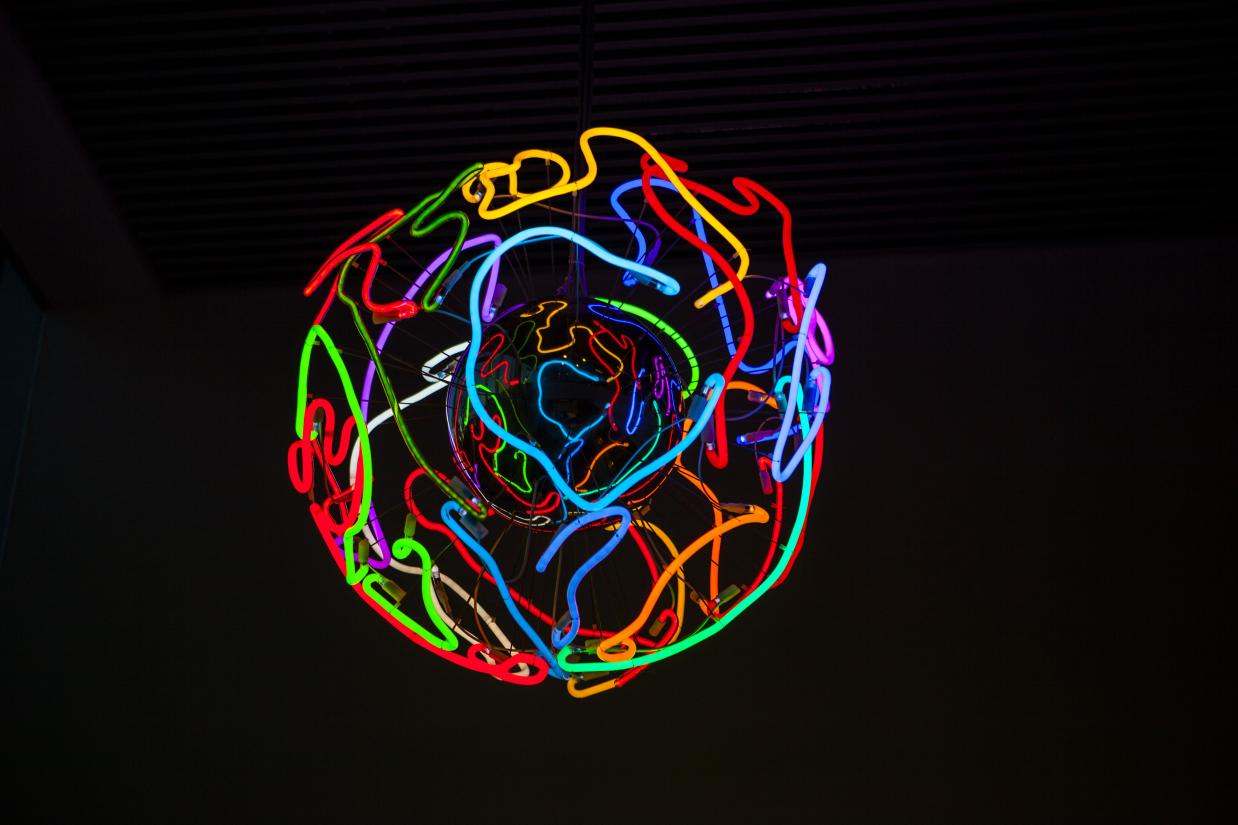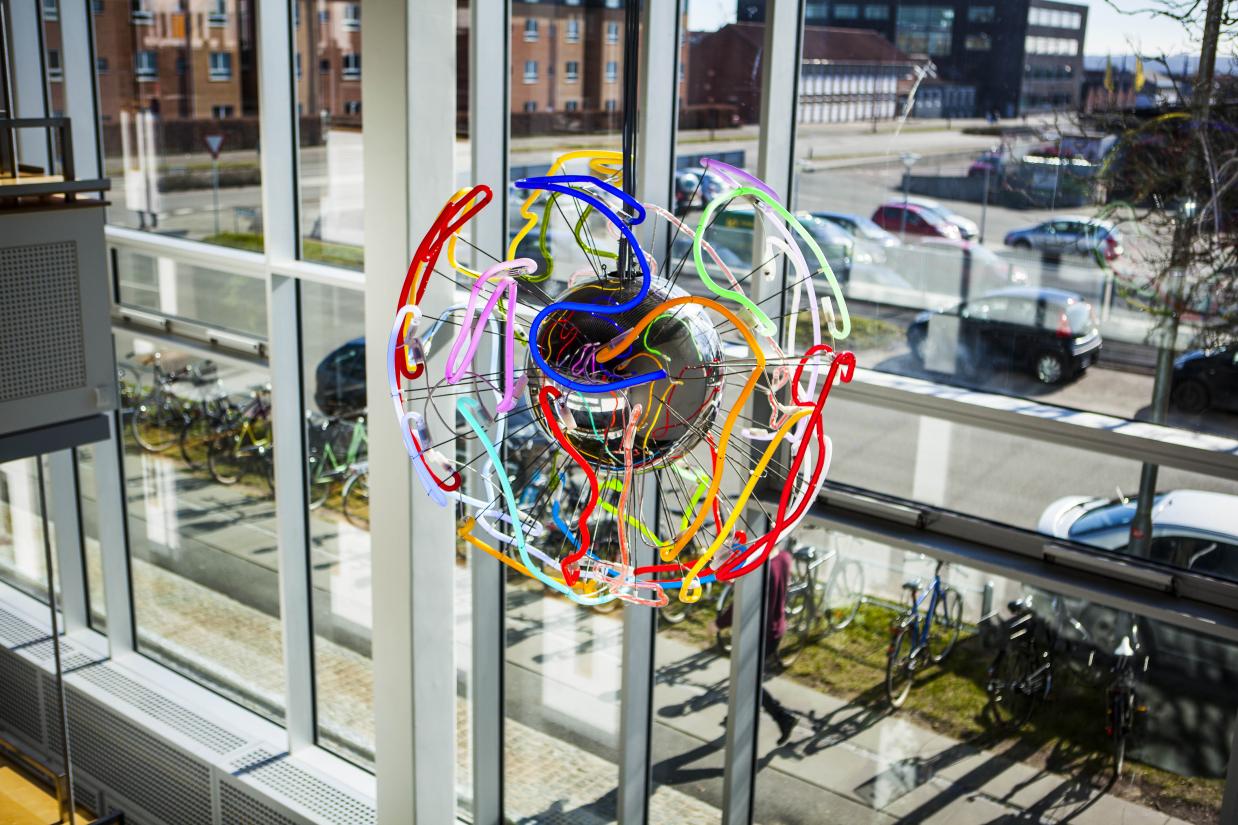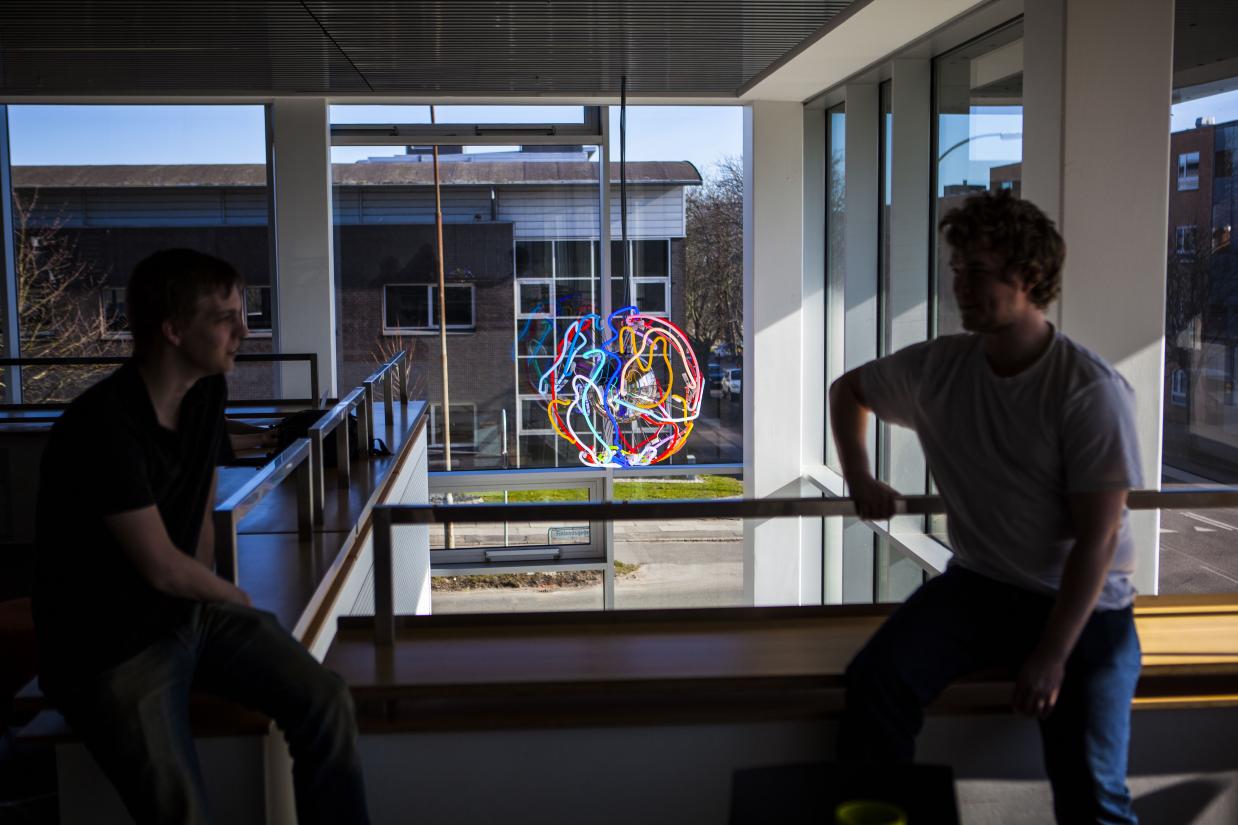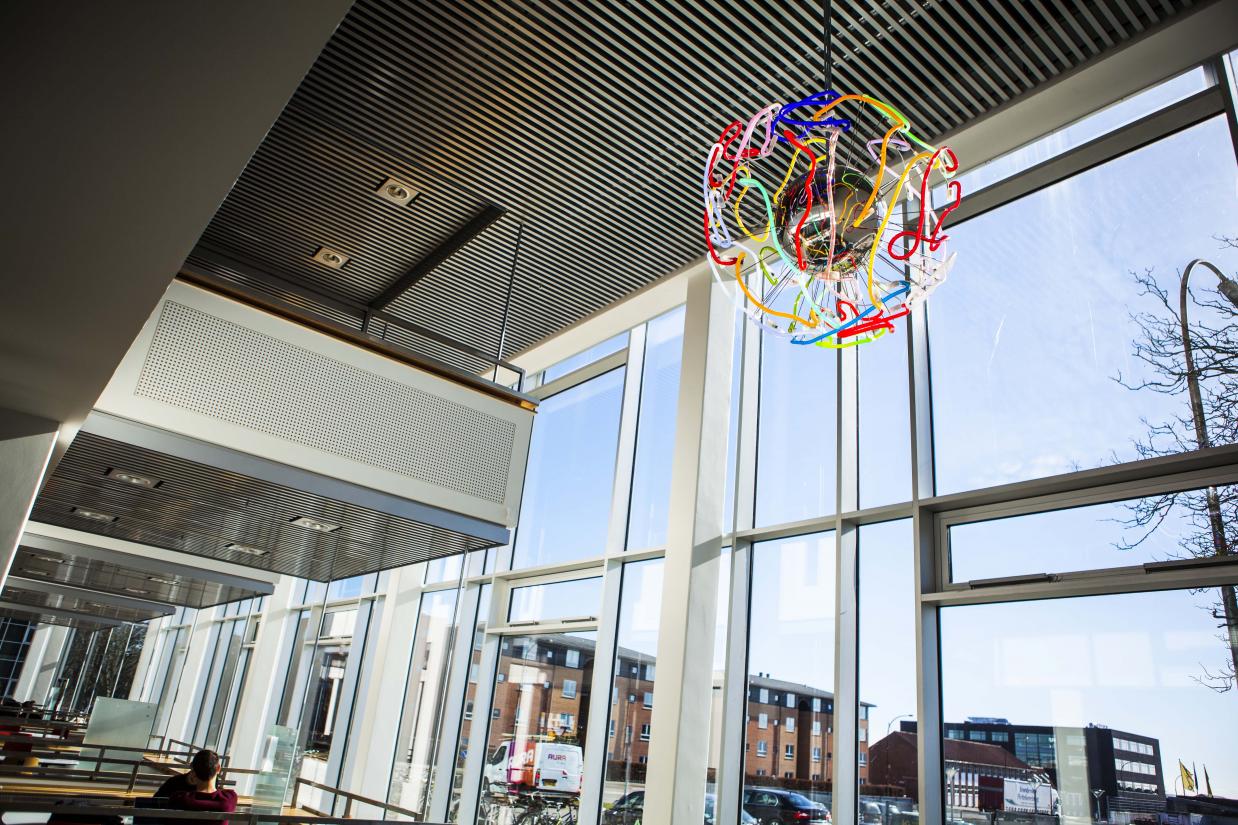The three eye-catching pendant lamps at the IT Corner, Aarhus University are not only a treat for students and staff. Anyone passing by the building, which is situated close to the popular shopping mall Storcenter Nord, is bound to notice the luminescent sculptures through the building’s glass facade. Especially after dark.
‘We live in a country where it’s dark much of the year, so we shouldn’t underestimate the urgent need for light!’ says Erik A. Frandsen.
Art and research
Erik A. Frandsen, born 1957 in the Danish town of Randers, is not unfamiliar with Aarhus University. Among other contributions, he decorated Building 1430 by Langelandsgade in 2008 – also with funding from the New Carlsberg Foundation – with mosaics, reliefs and paintings as well as the medium that he was focusing on and giving a highly original treatment at the time: large, polished sheets of steel with engraved floral motifs.
Bodil Due, chairman of Aarhus University’s art committee and former dean of the Faculty of Humanities, Aarhus University, describes Erik A. Frandsen as an artist who is always on the search for new methods, motifs and materials, driven by the same curiosity and originality that characterizes academic studies and research.
‘We believe that art and science belong together and inspire each other. Art can offer a different perspective on the world than the one we read about in textbooks. These three unique lamps complement the art we already have from Erik A. Frandsen’s hands in the most beautiful way. The lamps enrich and delight the daily users of the buildings as well as passers-by,’ says Bodil Due.
Bodily experiences
The three lamps, whose luminescent components are bent neon tubes, are based on a process that begins with the artist’s own body.
‘My wife and I place light-emitting diodes on our finger tips and move our bodies in front of an analogue camera with an open shutter; due to the long exposure time, the movements of the light source are tracked as diffuse, wavy lines on the celluloid surface of the photograph.’
Subsequently, Erik A. Frandsen transfers the lines from the photo to paper to produce paper drafts which in turn serve as the basis for the neon tubes, which are bent around a sphere.
‘It is a wildly complicated process, and I get help from a glassblower’s workshop in Herlev. It is incredibly delicate work that few people master today. The neon tube, which is typically 2.2 metres long, is heated and bent, centimetre by centimetre. Once that process is complete, electrodes, fittings and reflective steel balls are added to make the lamps function and appear exactly the way I want.’
The lamps are attractive and eye-catching, but to Erik A. Frandsen, art is not about creating something that looks dazzling:
‘Decoration is fine, but my goal is to create things with a different dimension; they have to spring from something else, something existential and substantial. In a painting, for example, you can add highlights as a finishing touch, a decorative feature, but for me, the painting only works if the light streams out of it, from the very back; like a powerful core. One way for me to achieve this quality in my work is to use the human body as my point of departure. In our minds, we can imagine all sorts of things, but without involving the body I don’t think we get anywhere. The lamps, which are based on body movements, appeal – ideally – to the mind but via a clear link to the body,’ says Erik A. Frandsen.
